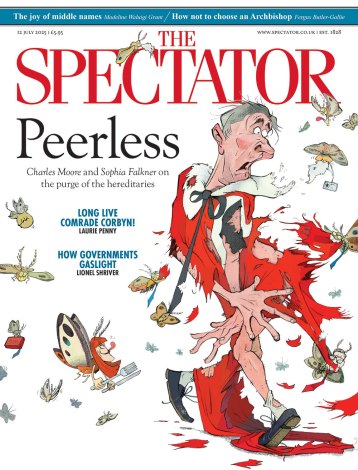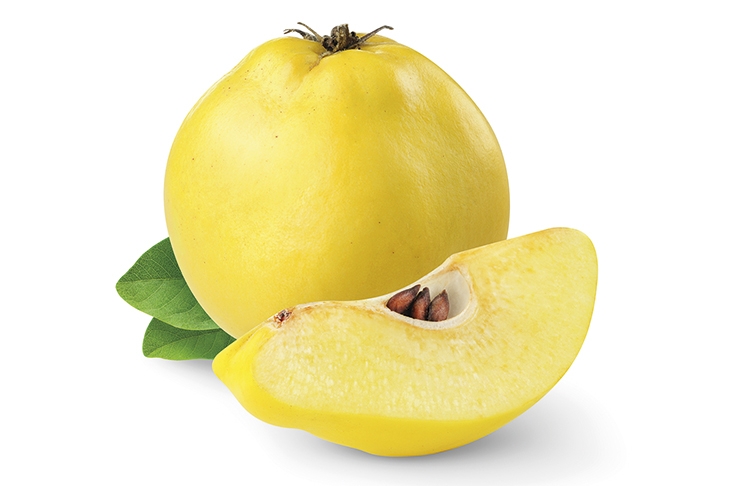I recently bought some quinces in our local farmshop as part of my new policy of investing heavily in right-wing fruit, vegetables and legumes. This undertaking, born of principle, has meant a surfeit of cauliflower in our diet, the brassica having been identified by the Democratic party congresswoman Alexandria Ocasio-Cortez as a signifier of white colonialism.
That the quince is decidedly right of centre is surely beyond dispute. It was first grown in England by Edward I, the ‘Hammer of the Scots’, a man who would have made short work of Nicola Sturgeon. In the 5th century BC the fruit cropped up in Aristophanes’s play The Acharnians, when the farmer Dicaeopolis remarks to a teenage sex-worker: ‘Oh! my gods! what bosoms! Hard as a quince! Come, my treasures, give me voluptuous kisses!’ Aristophanes was clearly not a signatory to the #MeToo movement. A couple of centuries later, Callimachus tells us how Acontius uses a quince to pull some chick in the garden of Aphrodite, thus establishing the quince as the go-to symbol for elderly men pursuing underaged women. I don’t know if Jimmy Savile ever mentioned quinces.
The fruit resembles a degenerate pear — a pear which has made bad choices in its life. Downy and squat. The tree from which it emerges is a delight, especially in early May when fecund with pink blossom, which is the time that famous perfume begins to emanate. A rich, cloying, decadent aroma reminiscent of Paco Rabanne’s 1 Million deodorant, which my wife has banned me from using because she considers the scent ‘effeminate’. That perfume stays with you — in the fruit bowl, when you are peeling it and, most of all, while it is being cooked.
Like all good food, and especially right-wing food, the quince requires work, time and an appetite for deferred gratification. It is a bugger to prepare. Peel and core a quince and you will find a swede can be sliced through like butter. The flesh of the quince is fibrously obstinate and the core intractable; be careful with that knife. When you have finished peeling and quartering, set the seeds aside in case a member of the Liberal Democrats comes over. They are rich in cyanide. Toast them and tell him they are pumpkin seeds. That’s the best way I can think of to make a lefty turn blue.
Cook those quarters gently. Either poach in a couple of inches of sugared water, a dash of honey and perhaps a strand of thyme in a saucepan on the stove top, or in a bath of the same in the oven. The recipe instructions vary as to how long you should do this — some suggest 40 minutes. Rubbish. You need at least two hours on a low heat. Only then will the quince reveal its magic — the gradual metamorphosis from a wan, pale yellow to a rich crimson, the anthocyanins doing their work. Add another hour or so if you’re making quince cheese from the pulp and then another six to rest, before straining and cooking again with added sugar. It will set just fine due to its natural load of pectin.
But I prefer the quartered fruit to still have a little bite; five or six segments and the reserved cooking juice will transform your apple crumble with a gentle tartness. You can purée the red fruit into an accompaniment for duck, or simply serve as they are, with their gloriously red and sticky cooking juice, topped with cream. Either way, hurry: the quince season is nearly at an end. Right-wing fruits know their time and place.







Comments